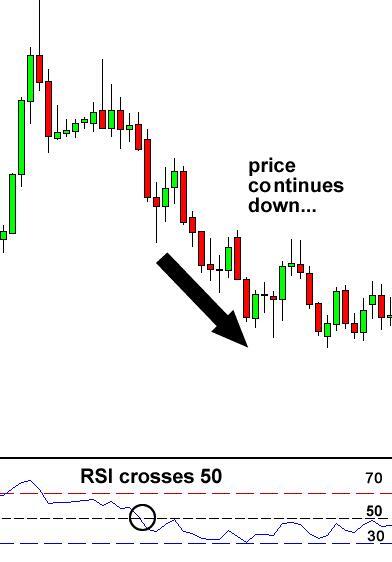
While using a system like this may seem like an obvious idea, there are many plants that do not utilize one. According to Mr. Bleichrodt, a 2021 university study of 11 Dutch mini-forests found over 1,100 types of plants and animals at the sites — kingfishers, foxes, hedgehogs, spider beetles, ants, earthworms and wood lice. Four years later, Elise van Middelem started SUGi, which has planted more than 160 pocket forests worldwide. The company’s first forest was planted on a dumping ground alongside the Beirut River in Lebanon; others were sown later near a power plant in the country’s most polluted city, and in several playgrounds badly damaged by the 2020 blast at Beirut’s port.

In a previous paper, Matias and Le Roux (2018) proposed an RTO variant called Real-time Optimization with Persistent Adaptation (ROPA) that avoids the steady-state wait. The basic mechanism of ROPA is the association of online estimators to the steady-state economic optimizer of the TS cycle. As a consequence, the model parameters are continuously updated and the cycle can be triggered at any time instant.
Real time optimization with multivariable control is required to maximize profits
Some facilities generate and sell electrical power as well as consume it. Having accurate real time cost data helps engineers and operators optimize fuel types, steam generation https://online-accounting.net/ and electrical power flows to maximize profits. In a manufacturing facility, electrical, fuel and raw material costs originate in Enterprise Resource Planning (ERP) software.
Large herbivores keep invasive plants at bay – Science Daily
Large herbivores keep invasive plants at bay.
Posted: Tue, 05 Sep 2023 21:49:43 GMT [source]
Nevertheless, if we choose the entire plant as our optimization scope, the problem shifts to how we update the plant-wide model. If your company manufactures several products at different locations in your plant, each product has its own overhead expenses. Instead of figuring overhead costs for each product, you can calculate plant-wide expenses. This averages the costs for all products, and gives you an overview of expenses for your entire manufacturing operation. Sometimes called the “predetermined overhead rate,” your plant-wide figure helps you understand your company profitability.
Plant-wide definition
Basically, we divide the plant model into subsystems and we update the parameters of the correspondent submodel using either steady-state estimation, as in TS, or online estimation, as in ROPA. Consequently, since the plant-wide model is continually updated, the plant-wide economic optimization can be scheduled at any desired rate. The benefits of using asROPA are illustrated in a case study in which a system composed by a distillation column and a reactor is optimized. In this case, the plant-wide model parameters that are related to the column are updated using a steady-state strategy, whereas the parameters related to the reactor are estimated online.
- Despite the available detection strategies, steady-state periods are intrinsically very difficult to detect or even nonexistent (Darby et al., 2011).
- Get our Free Digital Transformation Roadmap, a step-by-step guide to achieving data-driven excellence in manufacturing.
- These problems become even more acute if the size of the process increases.
- The second application of the “plant-wide” term refers to the re-presentation of the conditioned data throughout the mill.
- This figure is your plant-wide indirect cost that you must pay just to be in business.
Simply collecting and storing data does not, by itself, yield measurable benefits. Michael — Founder/Owner — Business development market(s) MN, WI, ND & SD
Michael is a niche application specialist for OEM, end-user filtration, and an expert in compressed air filtration and drying. He is also a Food Market Specialist for sterile air and SQF qualification requirements.
Plant-wide Systems
A third forest is in the works, he said, and all three were planned and organized in conjunction with the non-profit Biodiversity for a Livable Climate. Dr. Miyawaki’s prescription involves intense soil restoration and planting many native flora close together. Multiple layers are sown — from shrub to canopy — in a dense arrangement of about three to five plantings per square meter. The plants compete for resources as they race toward the sun, while underground bacteria and fungal communities thrive. Where a natural forest could take at least a century to mature, Miyawaki forests take just a few decades, proponents say.
Doug Tallamy, an American entomologist and author of “Nature’s Best Hope,” said that while he applauded efforts to restore degraded habitat, particularly in urban areas, many of the plants would eventually get crowded out and die. These examples are programmatically compiled from excel bookkeeping templates various online sources to illustrate current usage of the word ‘planetwide.’ Any opinions expressed in the examples do not represent those of Merriam-Webster or its editors. In this case the enhanced data access would lead to good decision making and more efficient operation.

Your indirect costs are those that continue no matter how much or how little you manufacture. These include things like rent or mortgage payments, insurance, equipment leases, and plant maintenance. This figure is your plant-wide indirect cost that you must pay just to be in business. All of your manufacturing activities depend on the services you are paying for throughout your plant. Crucially, the method requires that local residents do the planting, in order to forge connections with young woodlands. In Cambridge, where a second tiny forest, less than half the size of the first one, was planted in late 2022, Mr. Putnam said residents had embraced the small forest with fervor.
Advantages & Disadvantages of Using Absorption Vs. Variable Costing
Then, the model has been dynamically validated using the analysis acquired over an entire year. The model’s accuracy was acceptable and therefore was created to perform optimization studies. Multiple operational scenarios were simulated to achieve the highest effluent quality with nitrogen removal, as the plant currently is not able to perform nitrification-denitrification. Different DO concentrations, RAS flows, SRTs and consequently WAS flows were varied to optimize the nitrogen removal. It was found that nitrification and denitrification percentages of 94 and 62.4%, respectively, could be achieved easily without modifying the WWTP’s configuration or unit capacities. This was achieved by increasing the SRT from 2.7 to 7 days, while converting some compartments of the aeration tank from aerobic to anoxic.
Some of the information or views included in the documents may be affected by subsequent changes to the referenced statutory or regulatory language or by court decisions. In addition, many of the statements in these documents are based upon the federal regulations which may differ from rules that govern federally-approved programs. Permitting authorities are advised to consult with their EPA Regional Offices if there is a question as to the relevance of a particular statement to their NSR program.
How to Calculate the Overhead Rate Based on Direct Labor Cost
Digitizing and storing data reduced costs and increased efficiency at the departmental level. These include energy usage, wages for production and shipping personnel, and materials. Each product will use a different amount of these resources, but you can use a grand total for each direct cost as your plant-wide figure.
- Consequently, it is not necessary to obtain a dynamic model for the whole process.
- In response to this situation, manufacturers will use departmental overhead rates and perhaps activity based costing.
- Because a Miyawaki forest requires intense site and soil preparation, and exact sourcing of many native plants, it can be expensive.
Despite the available detection strategies, steady-state periods are intrinsically very difficult to detect or even nonexistent (Darby et al., 2011). Additionally, it is hard to determine if the process is actually at steady-state even after meeting the methods criteria (Rhinehart, 2013). For example, Menezes (2016) applied different steady-state detection strategies to an actual data set from a distillation column. The author concluded that same operation periods can be evaluated as transient or steady-state depending on the conservativeness of the applied strategy and/or the steady-state acceptance criteria.
Since then, one of the most used and well-known online process optimization techniques is Real-Time Optimization (RTO). The typical RTO implementation scheme is composed by two optimization layers and, consequently, known as the two-step (TS) approach (Chen and Joseph, 1987). The first layer updates the parameters of a rigorous steady-state (SS) model of the process by minimizing the deviation between process predictions and plant measurements. In the second layer, the updated model is optimized in an economical sense (e.g maximizing profit, minimizing cost). The PlantPAx DCS excels by impacting the overall effort to integrate the process control layer to the enterprise.

